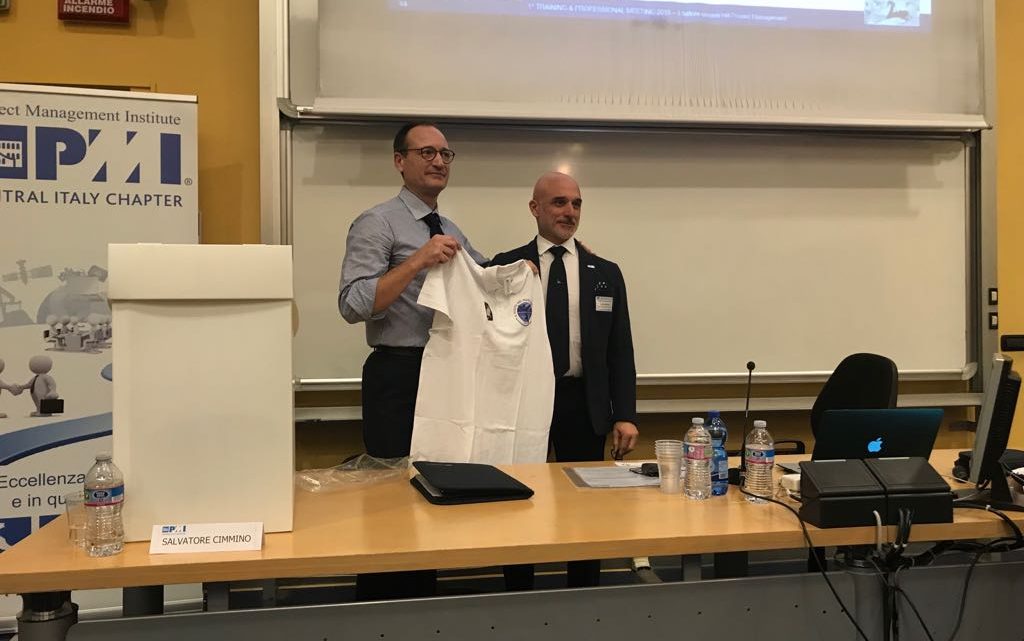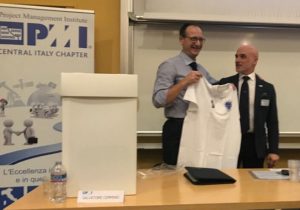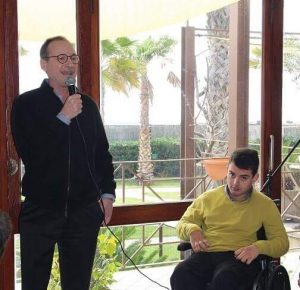
The social value of disability
To know the law is not so useful, if you don’t know anything about the people for whom that law was made. Beyond diversities, what really matters is our being human, our dignity as a person: and this belongs to each and every one of us. It is at this dignity that we must look, whenever we relate to any kind of diversity.

March 9, 2018 – Rome, Rome TRE University – Conference: The Human Factor in Project Management – Salvatore Cimmino and Luca Romano, (PMP, Director of Professional Development).
Disability lies in society and not in persons. When a society creates obstacles to the accomplishment of every-day activities, the collectivity is lead to think that these obstacles originate from the individual and not from the context. But this is a distorted thought, whose effect is isolation and, as a consequence, marginalization. Only a shared experience of life, and the implementation of more accessible conditions of living, can allow individuals to be full-fledged actors in the social, cultural, and productive fabric of a community.
I have been living with my disability ever since I was 14. Now I am 54, and in my life I have known both happy and difficult times, just like everybody else. Obviously, however, my hardest problem was in my condition. I believe that a society, to be called a civil one, ought to consider the well-being of its members as its major goal; their basic needs must be taken into account. This requires, in my view, a cultural process.
Such a process must help consolidate in the public opinion the idea that a disabled person is not a cost for the community, but a hand to be held, a challenge that the Science must accept. To invest on people with disability can be a way to create wealth for the entire community. In fact, a cohesive social fabric represents the fundamental prerequisite to generate economic resources and overcome inequalities. The social fabric I have in mind is the one that considers the goals attained by scientific research and technological advancements as tools for obtaining better quality of life, rather than more money. Prosthetic devices and last-generation digital machines should ensure a better quality of life for the vision- and hearing-impaired persons as well as for the amputees.
I believe that the only way to emerge and make one’s existence visible is to think of diversity and disability as an extra-value, a resource. This is, I believe, the only key to a cultural change in our Country. If we are convinced—as I myself have learned—that diversity discloses an opportunity for a common growth and benefit, then it is necessary to start an educational process. This educational process should involve schools as well as families, which are the places of development and growth of our children. This will enable us to create a new, more welcoming and inclusive generation, that will be able to offer real solidarity.
My project, which I pursue at the best of my expressive capacities, is intended to this very goal: to challenge the opacity of a world that still struggles to welcome and include persons with disability, whose pathways of learning, education, and rehabilitations are made uncertain and precarious. In fact, inclusiveness cannot be limited to its passive aspects, but should be actively performed and aware of the advancements made by those who live with a disability.

10 March 2018 – Torre Annunziata – Conference: Civil society at the service of humanity. Photo: Salvatore Cimmino and Dario Ricciardi, (Torresette Journalist)
Inclusiveness has to become the research of all possible means apt to reduce the initial disadvantage. The goal is to make life worth its name: sometime to live autonomously, possibly through a productive work which could be useful for one self and to other people. We must not give up hope, but we have to provide all possible means to compensate these disadvantages. We have to consider the starting conditions not as an insurmountable limit, but rather as a difficulty to be dealt with. We must not to accept and resign to any kind of handicap, but we have to save people from a life of marginality. We have to change the starting conditions in order for people to live a normal life. They must be enabled to claim their rights and contribute to the growth and development of society. If made accessible, technology can contribute to transform a person from a passive into a socially active individual. Also thanks to the UN Convention on the Rights of Persons with Disabilities (CRPD), today disabled people are no longer judged based on their syndroms or aspect, and even less on their performances. They are considered for their potential. This consideration becomes possible, however, when the existing legislation is enforced and most of all when all the people involved in the life of the person with disability are available to help.
According to Reuven Feuerstein human beings are modifiable, namely, they are subject to be meaningfully changed through an affective-educational intervention mediated by other human beings. Borders are not fixed and immutable. It’s worth trying. No one ought to be limited and defined by the label imposed on him or her, and even less by the condition he or she was diagnosed.
There is a lot of work to do. However, I am convinced that, like in all things, it’s only by walking together that what seemed impossible becomes possible.
We have to learn from one another. Every one of us is able to give something which can make another’s life a better life. The social value of disability, in my opinion, lies exactly in this: overcoming the myth of efficiency, of profit at whatever cost, and of unregulated individualism. The pleasure of sharing common goals and destinations, the joy of a victory which comes from exchange and cooperation: this is what really makes a life worth living.
Salvatore Cimmino